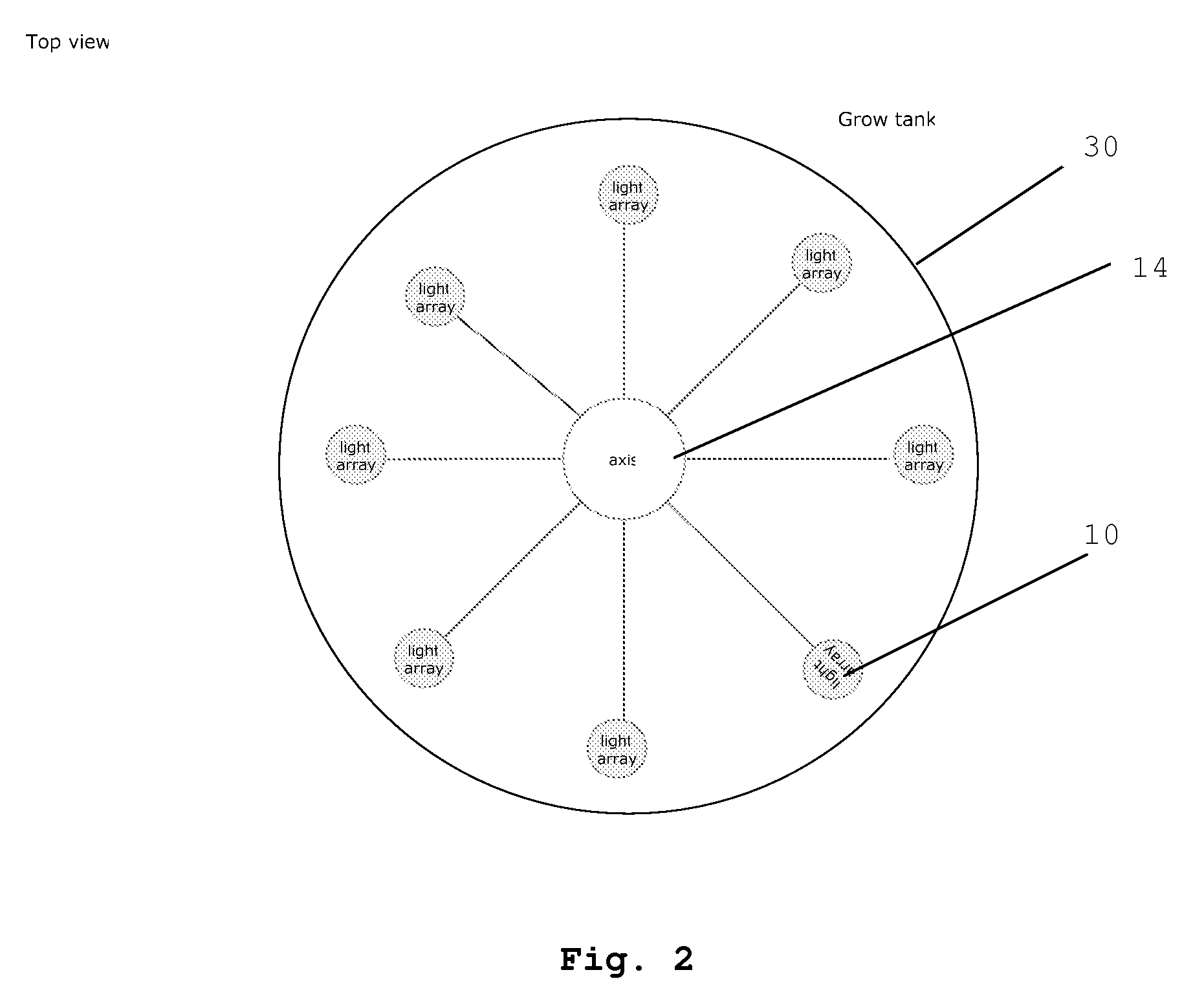Apparatus and method for optimizing photosynthetic growth in a photo bioreactor
a photobioreactor and photobioreactor technology, applied in biomass after-treatment, lighting and heating apparatus, lighting support devices, etc., can solve the problems of high energy utilization, poor photobioreactor performance, and inability to broaden the application of the reactor for bulk applications, etc., to achieve efficient light utilization, low energy cost, and high energy utilization
- Summary
- Abstract
- Description
- Claims
- Application Information
AI Technical Summary
Benefits of technology
Problems solved by technology
Method used
Image
Examples
Embodiment Construction
General Discussion
[0043]The use of cultivation systems for the growth of algae to be used as feed stock, e.g., for fuels, food, and plastics, as well as for other purposes, has come under intense scrutiny in the past few years. While many devices and schemes have been proposed for both outdoor (e.g., raceway) and indoor (photobioreactor) cultivation (see, e.g., Background), addressing proper lighting and nutrient dispersal had not been adequately resolved in order to attain high, consistent growth of the cultured organisms with sufficiently low costs.
[0044]The present invention directly addresses the issues of proper lighting and nutrient dispersal in a photobioreactor system, by utilizing a light array (or set of light arrays), usually a rotating light array, which can also be configured to disperse nutrients in the growth medium.
[0045]Even though exemplary uses of the present light arrays are in production of algal lipids, e.g., for production of biodiesel, and in overall biomass ...
PUM
| Property | Measurement | Unit |
|---|---|---|
| distance | aaaaa | aaaaa |
| distance | aaaaa | aaaaa |
| time | aaaaa | aaaaa |
Abstract
Description
Claims
Application Information
 Login to View More
Login to View More - R&D
- Intellectual Property
- Life Sciences
- Materials
- Tech Scout
- Unparalleled Data Quality
- Higher Quality Content
- 60% Fewer Hallucinations
Browse by: Latest US Patents, China's latest patents, Technical Efficacy Thesaurus, Application Domain, Technology Topic, Popular Technical Reports.
© 2025 PatSnap. All rights reserved.Legal|Privacy policy|Modern Slavery Act Transparency Statement|Sitemap|About US| Contact US: help@patsnap.com



